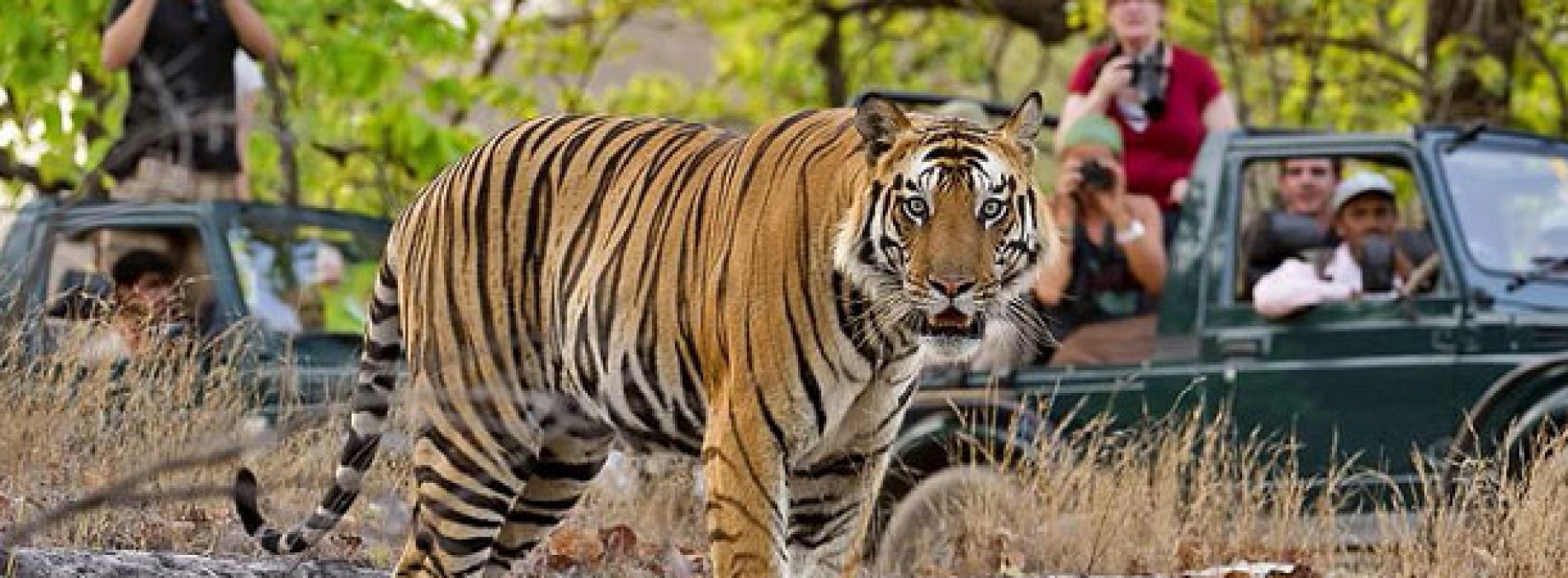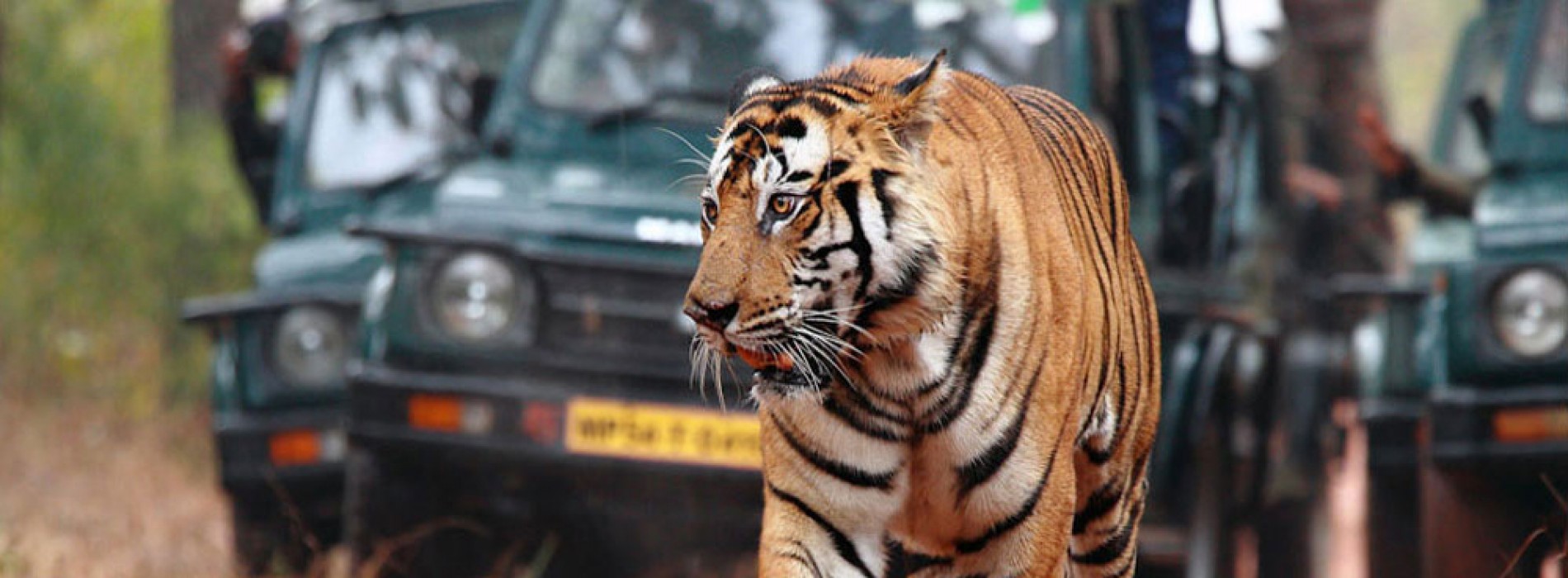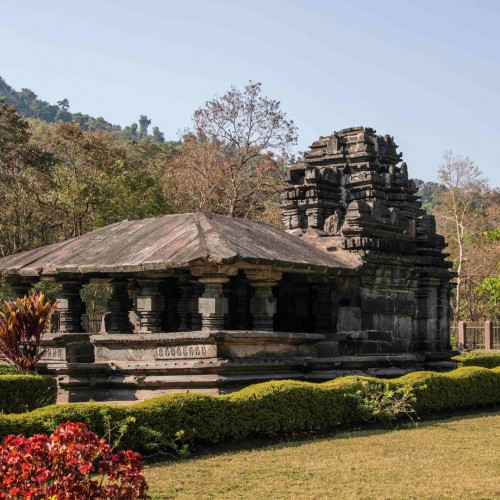Ranthambore National Park: natural abode of the majestic tigers
Ranthambore National Park is also the site of the historical Ranthambore fort and other archeological ruins, which make it a unique blend of nature, history and wildlife.
Located in Rajasthan’s Sawai Madhopur district in the state’s southeastern part, Ranthambore National Park is one of the biggest and well-known national parks in the Northern India. The park is located right at the junction of the Ar- avalli and Vindhya hill range. Surrounded by sanctuaries such as the Mansingh Sanctuary and the Kaila Devi Sanctuary, Ranthambore Na- tional park has an area of about 400 sq km. In terms of area, the park is one of the largest tiger reserves in India. The forest inside the park is quite dense, tropical and dry. Rocky terrain and lakes are also present in the park.
The Park is popular as a major wildlife attraction among tourists and wildlife lovers, both domestic as well as foreign.
Ranthambore national park officially become a wildlife sanctuary in 1957 and in 1974 it got recognition and protection under ‘Project Tiger’. F i – nally in 1981, the park was ac- corded t h e s t a t u s of a National Park.
If you are interested in tigers, and have appetite to see the majestic predators in its natural habitat, Ranthambore National Park is the right place. You can also see many other wildlife and species in their natural habitat. Visitors have high chance to see a tiger in Ranthambore National Park since it has good number of big cats.
Visitors to the park can see here the tigers hunting for their prey even during the day time. They can see tigers roaming around in verdant greenery. They can also hear sound of other wi ldl i fe species such as chirpy birds and animals. Ranthambore is best known for its large tiger population. Frequent fatal human-tiger interactions and poaching prompted the government of India to launch Project Tiger in 1973.
There were 62 tigers in Ranthambore National Park according to the 2014 census of tigers. This number was 48 in 2013 and 25 in 2005. Over the past years, the tiger population in Ranthambore has seen ups and downs in its number due to poaching and other reasons. A decade ago the park saw a sharp decline in its tiger population with the number of tigers falling to 25 in 2005 from 44 tigers in 1982. However, the tiger count increased to 48 (34 adult tigers and 14 clubs) in the Park in 2008 due to sustained efforts by forest of- ficials to curb poaching. Surveil- lance over the park was increased to protect tigers from human poaching.
Although the park is famous for being the natural habitat of the celebrated Indian tigers, and people visit the park mainly to watch these majestic predators, but it i s a l s o home of a variety of other animals, plants, birds and species includ- ing Owlets, monkeys, leopard, caracal, hyena, jackal, cats, marshes, crocodiles, wild boar, bears, deer and various species of birds, trees and plants. The other prime attractions inside the park are ancient temples and chhatries.
Many water bodies are located all over the park, making it a perfect abode for its inhabi- tants, which do not need to bother for water even during the extremely hot summer. Apart from being sources of water for wildlife animal, lakes like Padam Talab, Malik Talab and Raj Bagh in- side the park are also homes of aquatic species.
The scenic landscape of the park is quite ab- sorbing and intriguing. The scenery varies vividly from one place to other inside the park. The steep slopes of the Vindhyas and sharp and con- ical hills of the Aravali mark the landscape of the park.
Ranthambore National Park is also renowned for being site of the historic Ranthambhor Fort built in the 10th century, after which the park has been named. The historical Ranthambore Fort is a World Heritage Site recognized by UNESCO. The Ranthambore Fort is situated on a hill and provides a panoramic view of the whole park.
The famous fort and other archeological ruins will remind you of bygone royal eras. There is a large fort of the bygone years atop a hill in the park. The 10-century old fort further enhances the attractiveness of the park.
There are many ruins of bygone eras scattered all over the jungle, which give it a unique, wonderful and mixed flavour of nature, history and wildlife. Tigers at Ranthambore National park have been known to even hunt in full view of human visitors.
These tigers are famous for being seen in the daytime too, due to their lack of fear of human presence in vehicles. This lack of fear of humans is excellent for tourists, as they get to see the tigers often. The park was also famous for being hunting grounds of the former princes and Ma- harajas of Jaipur.
The park remains open for tourists every year from October to June and closed during the monsoon season from July to October. November and May are the best times to visit the park for seeing majestic tigers. Climate in The Ranthambore National Park varies from extreme cold during the winter season to extreme hot during summers. During the summers the visi- tors at the Ranthambore National Park are ex- posed to scorching heat. The temperature in the summer rises sometimes as high 46°C while temperature in the winter falls as low as 4°C.
Winter is the best season to explore the rich flora and fauna present inside the park.
The Ranthambore national park is a great nat- ural and historical legacy of India. It is wonder for wildlife and nature lovers. There is need to protect its biodiversity that is being affected by ecological pressures and poaching.
How to reach the park
Jaipur Airport is the nearest airport to the ranthambore national park. The airport is 130 km away from the park. The nearest railway station to reach Ranthambore national park is Sawai Madhopur, which 11 km away from the park, and well connected with trains.
- Ranthambore National Park is famous for the majestic tigers.
- The Park is located in Rajasthan’s Sawai Madhopur District.
- The park remains open every year from October to June
- The Park is 132 km from Jaipur, 227 km from Agra and 362 km from Delhi.
- Jaipur is also the nearest airport to reach the park.
- Sawai Madhopur is the nearest railway station to the park.
You might also like
Christoph Waltz joins Mandarin Oriental as its latest celebrity fan
The award-winning Austrian actor, Christoph Waltz, is the newest celebrity fan to join Mandarin Oriental’s USD multi-million global advertising campaign “He’s a Fan/She’s a Fan”. The campaign elegantly connects Mandarin
Ethiopian rolls out stopover packages to promote tourism
Ethiopian Airlines has rolled out stopover packages without any additional airfare that cater for all leisure needs with a view to promote tourism into Ethiopia. Passengers traveling through Addis Ababa
MMPRC appoints TRAC Representations as its Marketing Representative in India
Maldives Marketing & Public Relations Corporation Limited (MMPRC) appoints TRAC Representations as its Marketing Representative in India. By the white sand, near the sea, what a dreamy place to be;









